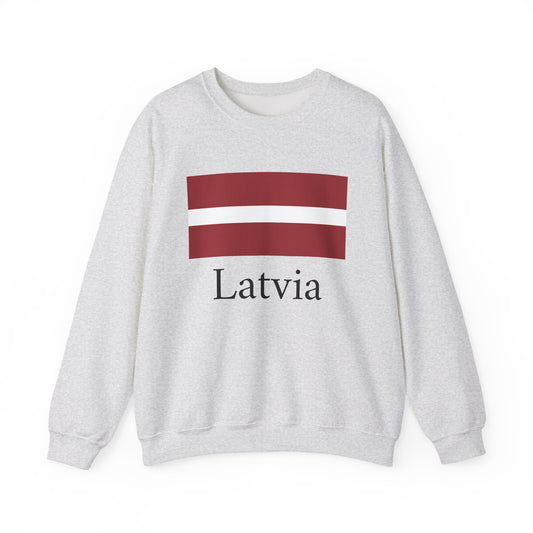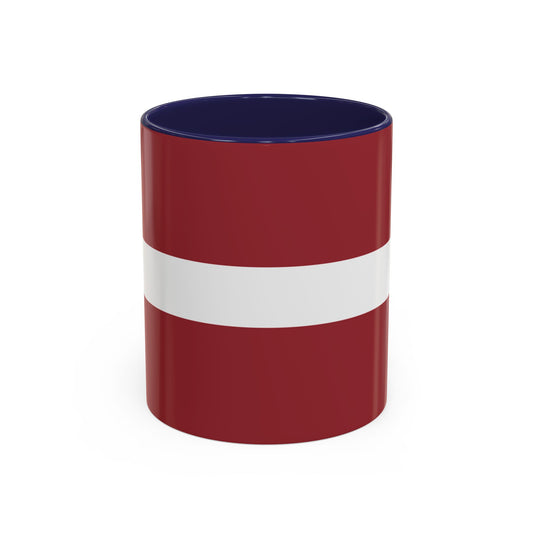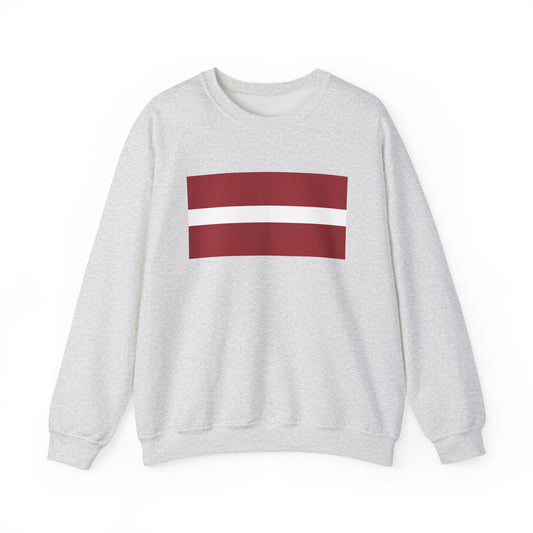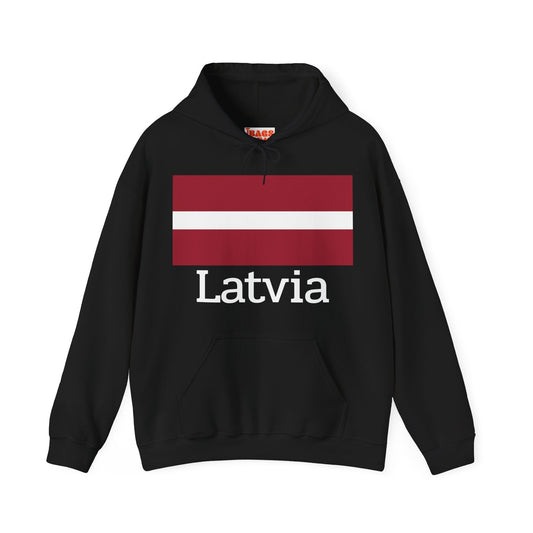-
Latvia Sweatshirt
Regular price $34.15 USDRegular priceUnit price / per -
Latvia Pillow
Regular price $22.65 USDRegular priceUnit price / per -
Latvia Backpack
Regular price $59.79 USDRegular priceUnit price / per -
Latvia Leather Patch Hat
Regular price $18.85 USDRegular priceUnit price / per -
Latvia Mug
Regular price $11.65 USDRegular priceUnit price / per -
Latvia Flag Sweatshirt
Regular price $34.15 USDRegular priceUnit price / per -
Latvia Trucker Cap
Regular price $14.90 USDRegular priceUnit price / per -
Latvia Hoodies
Regular price $34.40 USDRegular priceUnit price / per -
Latvia T-shirts
Regular price $22.79 USDRegular priceUnit price / per -
Latvia Flag Hoodies
Regular price $34.40 USDRegular priceUnit price / per -
Latvia Flag on T-shirt
Regular price $22.79 USDRegular priceUnit price / per
Collection: Latvia
The Latvia flag, a symbol of national pride and identity, represents the country's history and values. We will explore the design, history, and etiquette surrounding the Latvia flag.
Overview of the Latvia Flag's Design and Colors

At the heart of Latvia's national identity is its flag, which is marked by its distinctive three horizontal stripes. The top and bottom stripes boast a deep carmine red, while the central stripe is a stark white. This color scheme is not just visually striking but laden with meaning. Specifically designed with a ratio where the red stripes are each twice as wide as the white stripe, the flag's proportions play a critical role in its symbolic representation. The shades chosen are particular; the red is not a standard hue but a unique carmine, and the white is meant to provide a stark contrast, amplifying the symbolism and impact of the flag's colors. This careful selection of colors and the precise arrangement of stripes create a flag that is immediately recognizable and deeply meaningful, encapsulating the spirit and resilience of the Latvian nation.
Historical Context: The Journey of the Latvia Flag
The Latvia flag's origins can be traced back much further than its official adoption in 1922. Its design is said to have been inspired by a legend that dates to a 13th-century battle. According to folklore, a Latvian leader was wrapped in a white sheet and carried from the battlefield. The areas of the sheet stained with his blood became the flag's red stripes, while the untouched center remained white. This legend imbues the flag with a profound historical significance rooted in the struggles and sacrifices of early Latvians.
Despite its ancient roots, the flag's journey through modern history has been tumultuous. Following its official adoption, the flag symbolized Latvia's independence and national identity until the country was occupied by the Soviet Union in 1940 and then by Nazi Germany. During these occupations, the flag was banned, and its use could result in severe punishment. Nevertheless, many Latvians cherished the flag as a symbol of resistance and hope for freedom.
After regaining independence in 1991, the flag was reinstated as a national symbol, and today, it stands as a testament to Latvia's resilience and enduring spirit. This historical journey—from a legendary battle to a banned emblem of resistance, and finally, to a restored symbol of sovereignty—highlights the deep connection between the Latvian people and their flag, weaving it into the fabric of their national identity.
Symbolism: The Deep Meanings Behind the Latvia Flag

The vibrant carmine red of the Latvia flag symbolizes the courage and the blood of those who fought for the nation's freedom, encapsulating the resilience and sacrifice inherent in Latvian history. The pristine white, in contrast, represents the longing for peace, the purity of the country's aspirations, and the hope for freedom that has driven the nation through centuries of struggle. Together, these colors craft a narrative of a people committed to liberty and preserving their homeland's integrity. The architectural layout of the flag—comprising three horizontal stripes—further embeds a layer of meaning, believed by some to symbolize the unity of Latvia's three historical regions: Kurzeme, Vidzeme, and Latgale. Each element of the flag's design is a testament to the nation's enduring spirit, the collective memory of its people, and their unyielding dedication to national principles. Through these symbols, the Latvia flag communicates not just national identity but a story of struggle, survival, and the ceaseless pursuit of sovereignty.
Current Relevance: The Latvia Flag in Modern Times
Today, the Latvia flag is ubiquitous in the nation, symbolizing unity and patriotism across various contexts. It prominently adorns public and private spaces, flown high on national holidays such as the Restoration of Independence Day and the Proclamation Day of the Republic of Latvia. During these significant events, the flag not only adds to the atmosphere of celebration but also serves as a poignant reminder of the country's journey toward freedom and sovereignty. Military ceremonies are also occasions where the flag's importance is underscored, with the tricolor being displayed to honor the service and sacrifice of Latvian soldiers.
Recently, the flag has also found a place in international sporting events, where athletes proudly bear it as a symbol of their national identity and the collective hopes of their countrymen. This widespread usage reflects national pride and the flag's role in uniting Latvians under a standard banner.
Despite its pervasive role in Latvian society, the flag has sometimes been at the center of debates, particularly concerning its appropriation by certain factions for political agendas. These discussions often reflect broader dialogues about national identity, heritage, and the flag's values. However, such controversies have kept the flag's status as a powerful emblem of Latvia's enduring spirit and the shared aspirations of its people.
Additional Facts: Protocols and Anecdotes Surrounding the Latvia Flag
In Latvia, displaying the flag is governed by formal guidelines to ensure it is treated with the utmost respect. It is paramount that the flag, when being raised or lowered, does not come into contact with the ground, a practice observed to maintain its dignity. A ceremonial protocol is followed during these actions to honor the flag's significance. Observers are expected to show reverence by standing when the national anthem is played in conjunction with the flag being hoisted, reflecting the deep national pride associated with these symbols.
An anecdote that highlights the flag's profound importance dates back to the period of Soviet control. During this time, Latvians would covertly display the flag, defying the ban on its use. This act of resistance was more than symbolic; it was a dangerous assertion of national identity and defiance against oppressive rule. These protocols and stories underline not just the respect Latvians have for their flag but also the powerful role it has played as a beacon of hope and an instrument of defiance throughout the nation's history.






















